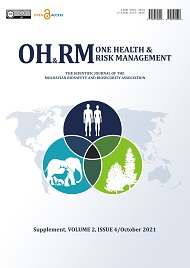Abstract
Introduction. The coronavirus disease 2019 (COVID-19), is a global pandemic caused by the severe acute respiratory syndrome coronavirus 2. The COVID‑19 pandemic has forced the scientific community to rapidly develop highly reliable diagnostic methods in order to effectively and accurately diagnose this pathology, thus limiting the spread of infection. A robust and responsive testing infrastructure is essential to our success in stopping the spread of SARS-CoV-2, the virus that causes COVID-19. At present, nucleic acid amplification methods represent the gold standard for the diagnosis of COVID-19 infection and together with clinical and radiological investigations, have improved the ability to correctly and rapidly diagnose a COVID-19 infection.
Material and methods. This paper analysis the major aspects of this topic published and were based on 65 bibliographic sources of authors across the country and abroad using Academic Google and PubMed databases. (France, USA, Germany, Italy, Norway, Canada, Romania, Republic of Moldova etc).
Results. Entire world have faced the second wave of COVID-19 pandemic which was characterized by an increased number of infections and related deaths worldwide. Timely and accurate COVID-19 testing is an essential part of the management of the COVID-19 crisis. The study showed that the persons with signs or symptoms of COVID-19 should have diagnostic testing. The handling of samples must comply with the requirements of biosafety and biosecurity. All clinical specimens may contain potentially infectious materials. Precautions should be taken when handling specimens suspected or confirmed to be positive for SARS-CoV-2. Suspected and confirmed SARS-CoV-2 positive clinical specimens, cultures, or isolates should be packed and shipped as UN 3373 Biological Substance, Category B and handled in a Biosafety Level 3 laboratory using BSL-3 practices.
In the preanalytical stage, collecting the proper respiratory tract specimen at the right time from the right anatomic site is essential for a prompt, accurate molecular diagnosis of COVID-19. The tests used for COVID-19 can be classified into two groups. The first group contains tests that can detect the presence of the virus itself - RNA and antigen tests. The second group of tests detects the immune response of the body against the SARS-CoV-2 virus, i.e. they report on past or ongoing infection with the virus - antibody tests. The selection and interpretation of SARS-CoV-2 tests should be based on the context in which they are being used, including the prevalence of SARS-CoV-2 in the population being tested.
Conclusions. The ongoing, outbreak of COVID-19 globally has emphasized the importance of the laboratory diagnosis of human coronavirus infections in order to limit the spread as well as to appropriately treat patients who have a serious infection. In diagnosis of COVID-19 is recommend to take into account, the test to be used, the patient's medical history, the time of the suspicious SARS-CoV-2 exposure, the type of sample analyzed and interpretation of the result.
|
 Views: 172|
|
Views: 172|
|
